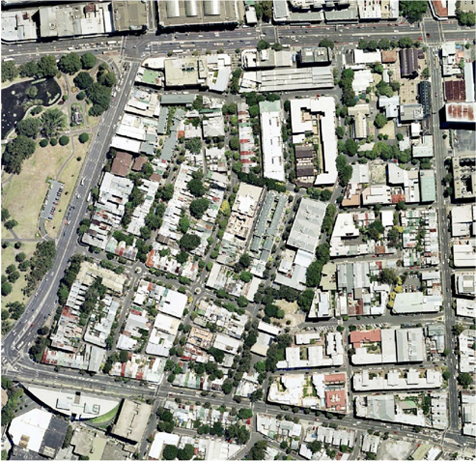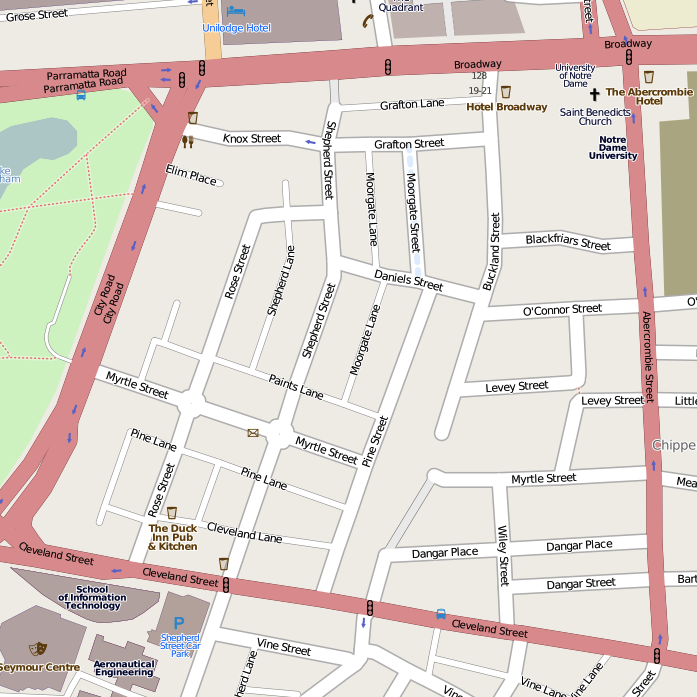In 2010, urban geographers at Griffith University published a book called Lifeboat Cities. Its clear message was that Australian suburbs are at the forefront of climate change impact. They must adapt to a hotter, more varied climate. Residents and businesses need to become more self-reliant for food, water and energy.
We must heed this book’s message, and create a plan to urgently retrofit Australian suburbs to better survive the increasing environmental and economic storms. But this plan doesn’t stop there. It envisions a suburb that is not only surviving, but prosperous. It embraces change as a unique and compelling opportunity.
The Sustainable Communities Plan provides ways for businesses to become self-reliant in six interconnected areas of village life:
- food;
- trees and other plants;
- art;
- getting around;
- energy, water and waste; and
- business and residential life.
When we sleep, eat, cook, work, talk, and go about our daily lives we use the buildings, streets, food, water, air and resources around us. If those resources are dirty, dangerous, unhealthy, too hot, too expensive or run out, then our lives become harder, less enjoyable and less sustainable. If the Sydney suburb of Chippendale continues on its current path, what is described here will be the likely outcome. Chippendale is being propelled away from – rather than towards – a healthy, sustainable village.
The Plan sees and strengthens connections. The stronger the connections, the more robust the village life of Chippendale will be. The Plan:
- will be driven by residents, workers, businesses and Aboriginal people;
- sets tangible goals and incentives for reducing the use and cost of energy, water, stormwater, food and transport for residents, businesses, City of Sydney Council and other government agencies or corporations;
- will map, monitor and report on processes and results;
- will publicise results to a wide audience, through conventional and social media;
- has tangible, practical goals which can be achieved by 2020; and
- applies to public and private land.
The Plan is simple: to change the hardware of Chippendale’s streets, buildings and greenscapes.
A fundamental key to the Plan – embedded in its development – is to harness the enormous resources of its citizens. So our first step is to build and nurture strong community networks and resources, tapping into the talents and motivations of Chippendale citizens. In recent severe natural and climactic weather events strong community networks proved to be the most successful defence. These work best during good times.
The Plan will create powerful community bonding experiences that will drive the outcomes, and provide a glue for the community to embrace the dynamic evolution of the Plan as it embarks on a life of its own.
With community and Council working hand in hand, the Plan will redesign and recreate the concept of what it means to live in an inner city area. It will raise values of property and make Chippendale a highly sought after community to live in and copy.
Once Council invests its resources in seeding the fundamental drivers, the Plan gathers its own momentum. Gradually Council costs will reduce, and keep falling as the sustainable snowball gathers pace.
The economic drivers will accrue not just to the suburb’s community, but to Council itself.
Sustainable houses, buildings and streets are cheaper and healthier places to live, work and walk. They support stronger communities. They use mainly the water and energy that falls naturally in the suburb. They avoid importing water or energy, or exporting sewage. They use water and energy in ways that mimic the natural ecosystem, or are similar to the way water and energy was used before the land was changed to a suburb. Water and energy bills are generally stable, low and affordable. The food is mostly grown where people live and work or is from local sources, less than an hour by vehicle.
Sydney’s Sustainable House – in Chippendale – is one example and will continue to be available as a model of early achievement. The house uses off-the-shelf systems, installed by local tradespeople and can be lived in by anyone without special skills or training. Up to 4 people may live in that house and be almost fully sustainable for water and energy. This plan offers regulatory and financial incentives, information and education to assist more such houses, buildings and businesses to be created in Chippendale.
About 23 per cent of the land in the Chippendale project area is roads and footpaths. This plan seeks to empower Council, the community and agencies to use that land so that food, water, energy and transport there is safer, healthier, more affordable, more local and is sustainable.
Council has built rain gardens in roads across the city to harvest, store and clean rainwater to grow plants to cool the city. Rain gardens and other road and building works are proposed to harvest and retain water to cool the project area and, in turn, to make buildings and streets cooler in summer as well as reducing the use of energy to cool buildings. With cooler streets the vegetation will grow more quickly and to its natural capacity. Cooler streets are healthier places to walk in, so naturally more people will want to use them.
Most of the technologies, materials, designs, products, services, businesses and choices needed to achieve the objectives are readily available, proven and demonstrated.
There is nothing radical about this plan. It draws on sustainable village living that has been practised for centuries. It is now being recreated in communities around the world from New York to Cuba, Scandinavia to California.
Sweden, for instance, decided a decade ago to move towards sustainable communities. Now 70 of the 290 municipalities in Sweden have embarked on the The Natural Step program. The town of Malmö is a leading example of this.
The Sustainable Communities Plan adapts and builds on existing concepts to suit Australian conditions. It has the potential to influence the fundamental drivers and structures of suburbs in every local government area in Australia.

Chippendale, Sydney
via Google Maps in satellite view.

Chippendale, Sydney via Open Street Maps.
- The area covered by The Plan is 186,240 square metres or about 18.6 hectares. 223.5 million litres of rainwater may potentially be harvested per year in that area.
- Roads take up 42,665 square metres or about 4.2 hectares, which is 23 per cent of the project area. 51.2 million litres of rainwater may be harvested from the roads area per year.
How does the Plan Work?
This plan is to stage trial demonstration works, gather data and develop permanent projects from trial projects over a 10 year period to the year 2020. Annual reviews of community feedback, data and projects will assist the implementation of projects from year to year.
The Plan:
- empowers residents, businesses and workers to use energy, water, food, transport and resources sustainably at home and at work;
- trials a broad range of incentives, trial demonstration projects and innovative council processes, some of which have been proven elsewhere;
- combines these initiatives in the one place and in the one plan;
- invites Council and the community to work in an equal partnership and to grow practical wisdom for achieving a sustainable and resilient community;
- will bring to life for the community the targets in the 2030 Vision; and
- is intended to be simple, affordable and easy to use by all.